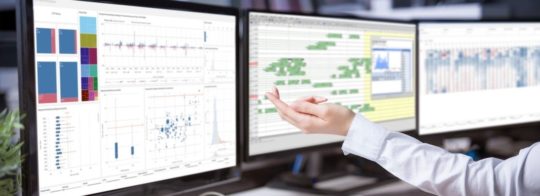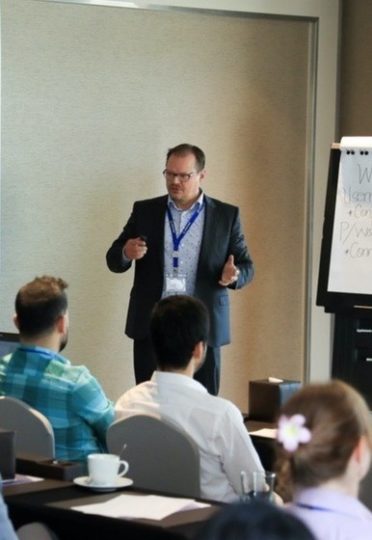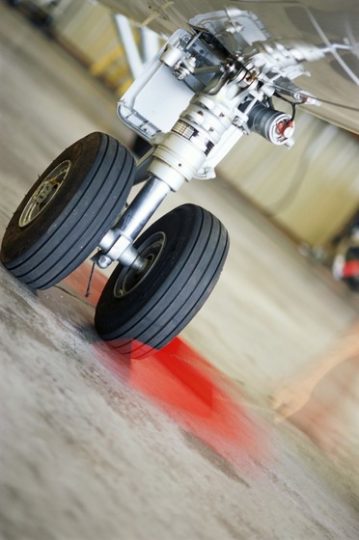
FRM News Flash – December 2019
Neos Quantifies Fatigue Risk Using Jeppesen Concert
Neos S.p.A, an Italian leisure airline with its main base at Milan-Malpensa Airport, and the first Italian operator to operate Boeing 787 Dreamliners, uses Jeppesen Concert and the Boeing Alertness Model in their fatigue risk management system.
“We have been using Jeppesen Concert since late 2015 for evaluation of our crew planning periods and for looking back on operated fatigue risk”, says Capt. Andrea Scali, Safety Manager at Neos. “With some 300,000 flight assignments now available in Concert, we can easily see overall trends in planned and flown production, but also drill into the details of any operated flight pattern which is a very powerful complement to fatigue reports”, he continues.
“Neos was one of the early adopters of this technology for analysis”, says Arvid Müllern-Aspegren, Scheduling Safety Specialist, at Jeppesen. “We cherish their trust in us, their feedback on new functionality, and look forward to supporting them for many years to come.”
Jeppesen Concert is a cloud-based business-intelligence solution for quantification and analysis of crew fatigue risk using the Boeing Alertness Model. Concert is an easily installed add-on to crew management solutions, regardless of provider. Please contact us over email for a demo and a trial – on your own data.
Make a Real Difference. The Jeppesen Team is Hiring.
 “The scheduling of airline crew for large airlines consists of very complex processes governed by flight and duty time limitations set by the regulators and unions. Jeppesen has developed a unique capability to take human physiology into account during…”
“The scheduling of airline crew for large airlines consists of very complex processes governed by flight and duty time limitations set by the regulators and unions. Jeppesen has developed a unique capability to take human physiology into account during…”
“…in this position you will be working as a frontend-, backend- or “full stack“-developer, based on your skills and interests. You will be involved with the Concert and Cathode applications, which are both built with a RHEL/Postgres/Python/Flask/Angular stack. We assume you have been part of web development project(s) before. In the longer term, you are expected to…”
Read the full ad here. We look forward to your application and having you on the team, working with FRM tools making a real difference.
Calibrate Your Robustness

A robust crew plan (pairings and rosters) that can withstand a fair amount of delays, crew illness etc. without ‘snow-balling’ into even more disruptions, is a critical aspect of crew planning. The way to cope with it efficiently is to build in buffers, fire-breaks and extra margins in the planning – and doing so where it matters the most. But how do you know it is done right, and how can you improve over time? We asked Tomas Gustafsson, one of the key persons behind a relatively new product from Jeppesen called Calibration, already adopted by operators in both Americas and in Europe.
How can an operator improve buffering using Calibration?
– In short, it is all about careful analysis of historically relevant delays superimposed on the original pairings, or rosters, and then measuring the planned patterns ability to absorb such disruptions. From that we create a mathematical delay model that is used for influencing upcoming plans during optimization, putting the right buffers in the right place. For those familiar with bio-mathematical models being used to reduce fatigue risk, this is quite similar – but our model needs to be tuned to each operators unique conditions.
Why are buffers so important?
– Excessive buffering is very expensive as it creates an overhead ‘felt’ by the airline every single day. Being short on buffers on the other hand, drives high additional costs for re-planning close to day of operation – often several percentage points in added costs and reduces On-Time-Performance. Also, relevant for this newsletter, late changes to rosters are known to drive both additional stress and fatigue for the crew – not to mention the detrimental effects on their social life. These effects can often be alleviated by using historical airline data and sophisticated models.
What is new about Calibration?
– It is easy for an airline to keep adding buffers over time, but it has historically been very difficult to be systematic about it using a data-driven methodology and also reduce buffers where motivated. Calibration adds such capability and enables a re-distribution of buffers, delivering increased robustness at a lower cost.
Where can an airline learn more about these tools?
– More material is found on this web-address and you are also most welcome to contact me and my team for a demo using the contact form found there.
Tomas Gustafsson is Product Manager for Optimization & Analytics working out of Gothenburg, Sweden. Tomas has more than two decades of experience from enjoying (!) solving the most challenging crew & ops management problems imaginable, in close collaboration with operators world-wide. He is a keen sailor and a frequent presenter at events and conferences that addresses operations research in depth.
Accelerate in 2020, Reaching Higher
What is your fatigue risk exposure for your crew on your largest base,  compared to the second largest base? For fleet A versus fleet B? This month compared to last month? Compared to last year, or why not to other operators?
compared to the second largest base? For fleet A versus fleet B? This month compared to last month? Compared to last year, or why not to other operators?
Do you find these questions hard to answer? Perhaps you don’t yet have a way of quantifying your overall risk exposure? Perhaps you currently work with avoiding planning and dispatching flights predicted worse than ‘X’ on some fatigue model scale, and actioning the ‘few-and-far-between’ fatigue reports you receive?
If so, may we propose a new year resolution for 2020? Why not make 2020 the year when you started quantifying and tracking your overall fatigue risk exposure, both predicted and actual, and put in place mechanisms for creating a positive trend on those metrics?
Welcome to contact us here if you find that interesting and would like a deeper discussion and demo. Chocks away – here comes 2020!
Happy Holidays

You guessed it; true to our tradition we will discount CrewAlert Pro over the holidays again this year.
CrewAlert remains the only app on Appstore providing full customizable modeling capabilities, simple import of roster data, using sleep from wearables, providing powerful features for fatigue risk awareness, mitigation and analysis in what-if scenarios.
Please download CrewAlert Pro between Dec 18 and Dec 31 and you will find it at (approx.) $10 instead of the regular $30. Happy Holidays from the Jeppesen FRM team!
Meet Up with the Jeppesen Experts
FEB 25-26: FRM Training Course, Gothenburg
MAR 16-19: Managing Fatigue 2020, Fremantle
MAR 31-APR 1: Flight Operational Forum Norway, Oslo
APR 20-22: AGIFORS, Istanbul
MAY 12-13: FRM Training Course, Montreal
jeppesen.com/frm
+46 31 720 81 00
Send us an Email
Neos Quantifies Fatigue Risk Using Jeppesen Concert
Neos S.p.A, an Italian leisure airline with its main base at Milan-Malpensa Airport, and the first Italian operator to operate Boeing 787 Dreamliners, uses Jeppesen Concert and the Boeing Alertness Model in their fatigue risk management system.
“We have been using Jeppesen Concert since late 2015 for evaluation of our crew planning periods and for looking back on operated fatigue risk”, says Capt. Andrea Scali, Safety Manager at Neos. “With some 300,000 flight assignments now available in Concert, we can easily see overall trends in planned and flown production, but also drill into the details of any operated flight pattern which is a very powerful complement to fatigue reports”, he continues.
“Neos was one of the early adopters of this technology for analysis”, says Arvid Müllern-Aspegren, Scheduling Safety Specialist, at Jeppesen. “We cherish their trust in us, their feedback on new functionality, and look forward to supporting them for many years to come.”
Jeppesen Concert is a cloud-based business-intelligence solution for quantification and analysis of crew fatigue risk using the Boeing Alertness Model. Concert is an easily installed add-on to crew management solutions, regardless of provider. Please contact us over email for a demo and a trial – on your own data.
Make a Real Difference. The Jeppesen Team is Hiring.
 “The scheduling of airline crew for large airlines consists of very complex processes governed by flight and duty time limitations set by the regulators and unions. Jeppesen has developed a unique capability to take human physiology into account during…”
“The scheduling of airline crew for large airlines consists of very complex processes governed by flight and duty time limitations set by the regulators and unions. Jeppesen has developed a unique capability to take human physiology into account during…”
“…in this position you will be working as a frontend-, backend- or “full stack“-developer, based on your skills and interests. You will be involved with the Concert and Cathode applications, which are both built with a RHEL/Postgres/Python/Flask/Angular stack. We assume you have been part of web development project(s) before. In the longer term, you are expected to…”
Read the full ad here. We look forward to your application and having you on the team, working with FRM tools making a real difference.
Calibrate Your Robustness

A robust crew plan (pairings and rosters) that can withstand a fair amount of delays, crew illness etc. without ‘snow-balling’ into even more disruptions, is a critical aspect of crew planning. The way to cope with it efficiently is to build in buffers, fire-breaks and extra margins in the planning – and doing so where it matters the most. But how do you know it is done right, and how can you improve over time? We asked Tomas Gustafsson, one of the key persons behind a relatively new product from Jeppesen called Calibration, already adopted by operators in both Americas and in Europe.
How can an operator improve buffering using Calibration?
– In short, it is all about careful analysis of historically relevant delays superimposed on the original pairings, or rosters, and then measuring the planned patterns ability to absorb such disruptions. From that we create a mathematical delay model that is used for influencing upcoming plans during optimization, putting the right buffers in the right place. For those familiar with bio-mathematical models being used to reduce fatigue risk, this is quite similar – but our model needs to be tuned to each operators unique conditions.
Why are buffers so important?
– Excessive buffering is very expensive as it creates an overhead ‘felt’ by the airline every single day. Being short on buffers on the other hand, drives high additional costs for re-planning close to day of operation – often several percentage points in added costs and reduces On-Time-Performance. Also, relevant for this newsletter, late changes to rosters are known to drive both additional stress and fatigue for the crew – not to mention the detrimental effects on their social life. These effects can often be alleviated by using historical airline data and sophisticated models.
What is new about Calibration?
– It is easy for an airline to keep adding buffers over time, but it has historically been very difficult to be systematic about it using a data-driven methodology and also reduce buffers where motivated. Calibration adds such capability and enables a re-distribution of buffers, delivering increased robustness at a lower cost.
Where can an airline learn more about these tools?
– More material is found on this web-address and you are also most welcome to contact me and my team for a demo using the contact form found there.
Tomas Gustafsson is Product Manager for Optimization & Analytics working out of Gothenburg, Sweden. Tomas has more than two decades of experience from enjoying (!) solving the most challenging crew & ops management problems imaginable, in close collaboration with operators world-wide. He is a keen sailor and a frequent presenter at events and conferences that addresses operations research in depth.
Accelerate in 2020, Reaching Higher
What is your fatigue risk exposure for your crew on your largest base,  compared to the second largest base? For fleet A versus fleet B? This month compared to last month? Compared to last year, or why not to other operators?
compared to the second largest base? For fleet A versus fleet B? This month compared to last month? Compared to last year, or why not to other operators?
Do you find these questions hard to answer? Perhaps you don’t yet have a way of quantifying your overall risk exposure? Perhaps you currently work with avoiding planning and dispatching flights predicted worse than ‘X’ on some fatigue model scale, and actioning the ‘few-and-far-between’ fatigue reports you receive?
If so, may we propose a new year resolution for 2020? Why not make 2020 the year when you started quantifying and tracking your overall fatigue risk exposure, both predicted and actual, and put in place mechanisms for creating a positive trend on those metrics?
Welcome to contact us here if you find that interesting and would like a deeper discussion and demo. Chocks away – here comes 2020!
Happy Holidays

You guessed it; true to our tradition we will discount CrewAlert Pro over the holidays again this year.
CrewAlert remains the only app on Appstore providing full customizable modeling capabilities, simple import of roster data, using sleep from wearables, providing powerful features for fatigue risk awareness, mitigation and analysis in what-if scenarios.
Please download CrewAlert Pro between Dec 18 and Dec 31 and you will find it at (approx.) $10 instead of the regular $30. Happy Holidays from the Jeppesen FRM team!
Meet Up with the Jeppesen Experts
FEB 25-26: FRM Training Course, Gothenburg
MAR 16-19: Managing Fatigue 2020, Fremantle
MAR 31-APR 1: Flight Operational Forum Norway, Oslo
APR 20-22: AGIFORS, Istanbul
MAY 12-13: FRM Training Course, Montreal
| jeppesen.com/frm | +46 31 720 81 00 | Send us an Email |
